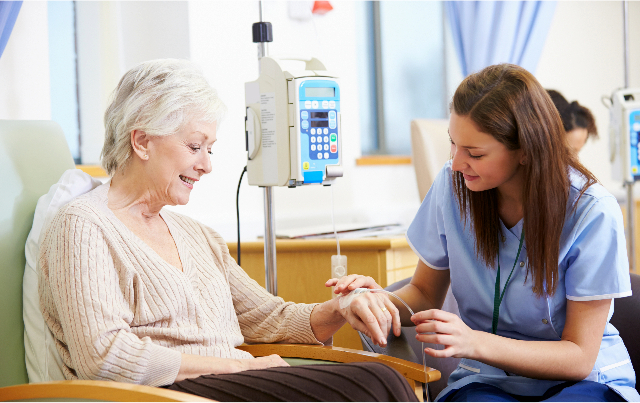Six years after its launch, CMS’ Oncology Care Model ended on June 30, 2022. Oncology practices that participated and stayed through the entirety of the program had clinical buy-in for the delivery of value-based care for cancer patients. However, despite CMS’ desire for a replacement model to continue OCM’s practice transformation, its Enhancing Oncology Model didn’t attract critical mass.
At this point, you may be asking yourself, “What happened to all the practices that participated in OCM? Why didn’t they choose to continue?” In this blog, DataGen will answer those questions with three observations about EOM.
Observation #1: Failure to meaningfully incorporate clinical adjustments
CMS failed to incorporate clinical adjustments into EOM’s target price methodology in a meaningful way, beyond what was demonstrated in the final performance periods of OCM. Instead of factoring clinical data elements into the underlying cancer-specific regression models, EOM continues to incorporate a benchmark-neutral clinical risk adjustment approach.
Under EOM, the clinical data elements that CMS risk-adjusts for include:
- ever-metastatic status for breast cancer, lung cancer, and small intestine/colorectal cancer episodes (which was applied in OCM); and
- HER2 status for breast cancer episodes only (which was new for EOM).
Other factors like cancer stage and current clinical status can be ascertained, but they are not yet being adjusted in the methodology, even though CMS requires practices to report this registry information, and peer-reviewed research has demonstrated their impact on predicting Medicare episode spend.
Observation #2: New challenges for potential EOM participants
Within EOM, CMS took steps to incorporate health equity considerations. Some actions taken include the collection of patient demographic information and adjustment of monthly enhanced oncology services payments by a beneficiary’s dual status.
The value of monthly enhanced oncology services payments in EOM is much lower than in OCM:
- EOM: $70 per beneficiary per month + $30 PBPM for dual beneficiaries
- OCM: $160 PBPM.
This created a new challenge for potential model participants, as they used the funding from monthly enhanced oncology services payments to make the required participant care redesign activity components of the program possible.
Observation #3: Not enough time to review baseline model data
Time and trust came into play. Practices that applied to participate did not have adequate time to review baseline data before the new EOM went live. EOM requires that practices take two-sided risk from the start of the model and offers two different risk arrangements to choose from, including narrow “neutral zone” corridors that impact financial performance. Any organization with experience in OCM knew how much financial uncertainty there was in oncology episodes, especially due to the continued inclusion of Part D drugs.
Final conclusions on EOM
Although positive changes were made to the model design when CMS rolled out EOM, many practices still mistrusted the program after the methodological challenges that plagued OCM. Unfortunately, fewer practices are in EOM: 44 practices began their participation in EOM, compared to 196 practices at the start of OCM.
EOM certainly won’t be the end of value-based care for cancer treatment. Many practices that considered participating in the model but chose not to go forward still expressed their continued focus on enhancing care for their cancer patient population within their accountable care organizations, through other payer relationships or outside of a formal alternative payment model — because they consider it to be the right thing to do for their patients.
The practices that elected to participate in EOM now have the challenge of implementing the care redesign strategies set forth in the model. They also need to critically evaluate their performance and opportunities for improvement.
Have more questions about EOM? Contact DataGen today to learn how we can help EOM participants or those interested in oncology episodes of care.


Comments
Post a Comment